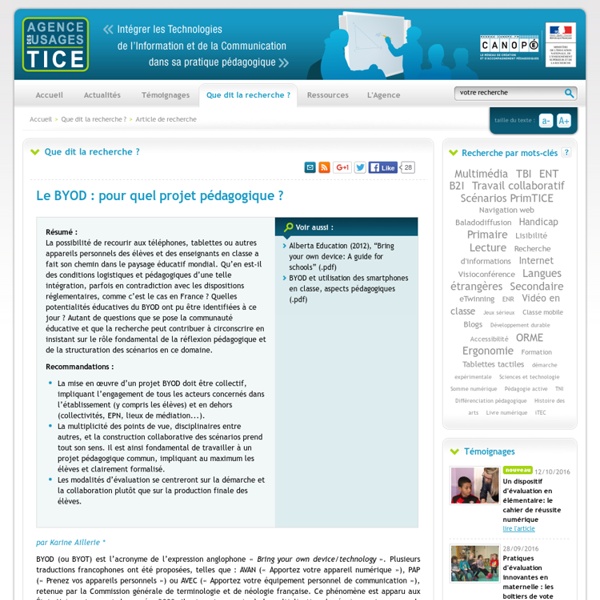



40 Uses For Smartphones in School As Alanis Morissette once said, ‘isn’t it ironic’. After years of struggle between teachers and students and the use of smartphones in school, new educational trends are actually encouraging the use of these devices. The mobile, cellphone or smartphone is not just used for WhatsApp, Facebook or Angry Birds, it can be used in a multitude of ways from an educational perspective. Don’t believe us? Keep reading. In this article we bring together 40 uses for smartphones in school.
5 technologies to avoid in the classroom-and what to use instead 3. Untested Apps and Online Tools: Thanks to the explosive growth of mobile technology and its use in education, apps and digital resources and tools across a host of platforms are also available…perhaps dizzyingly so. Checking education apps and tools on any large platform, like the Apple Store, for educator-based comments and reviews is tedious; and often challenges like apps and tools that are never updated, or apps and tools that don’t actually perform as promised cause more headaches then they’re worth. Better Option? Vetted apps and tools. Because of the overwhelming choice of apps and digital tools and resources that currently exist for education, some notable industry companies and organizations have taken the time to vet these tools for educators, using a selection process based on their own experience as well as feedback from teachers and administrators.
An Error Occurred Setting Your User Cookie This site uses cookies to improve performance. If your browser does not accept cookies, you cannot view this site. Setting Your Browser to Accept Cookies 50 Reasons It's Time For Smartphones In Every Classroom 50 Reasons It’s Time For Smartphones In Every Classroom by Terry Heick There are many ways to use a smartphone in the classroom, but it continues to be a touchy subject.
Parenting for a Digital Future – Coding for what? Because this week is National Coding Week in the UK, we are discussing the potential consequences of young people learning to code. While there is legitimate and growing call for kids to learn to code, it is essential that we think carefully and critically about what that entails. In light of potential risks or destructive effects, this post by Ben Williamson explores why coding needs to be taught with a commitment to exploring social consequences. Guide appareils mobiles en classe American Psychological Association. (2006). Multitasking: Switching costs. Retrieved from Awwad, F., Ayesh, A., & Awwad, S. (2013). Are Laptops Distracting Educational Tools in Classrooms.
edutopia Ten is now the average age when children receive their first cell phones, and those phones quickly find their way into classrooms. While cell phones have extraordinary potential for leveraging learning, they can quickly become a hindrance in the classroom, diverting attention away from learning. How can teachers harness the learning potential of students’ phones while also keeping them from being a distraction? I have learned that rather than trying to be reactive, the best defense when it comes to cell phones is a well-planned offense. Teachers who implement a proactive management plan developed in collaboration with the students at the beginning of the school year may have fewer issues as student cell phone ownership increases throughout the year. The first few weeks of the school year often focus on creating classroom routines, and thus are a perfect time to set up cell phone expectations.
Five tips on how to reinvent remote teaching The Covid-19 health crisis has made remote teaching a reality for all, but not without difficulty. At our University, our students have been learning remotely for almost a year and the successive lockdowns have taken their toll. At the start, we battled with technical difficulties, poor Internet connections and insufficient IT equipment while we struggled to isolate ourselves from others. We were then quickly faced with even more serious challenges: students confined to tiny bedrooms with intermittent wifi, some dealing with economic and social difficulties, sometimes worsened by psychological strain. As lecturers, we have all had to get adapted and tweak our teaching methods to compensate for the constraints of remote learning.
Guide appareils mobiles en classe American Psychological Association. (2006). Multitasking: Switching costs. Retrieved from Awwad, F., Ayesh, A., & Awwad, S. (2013).